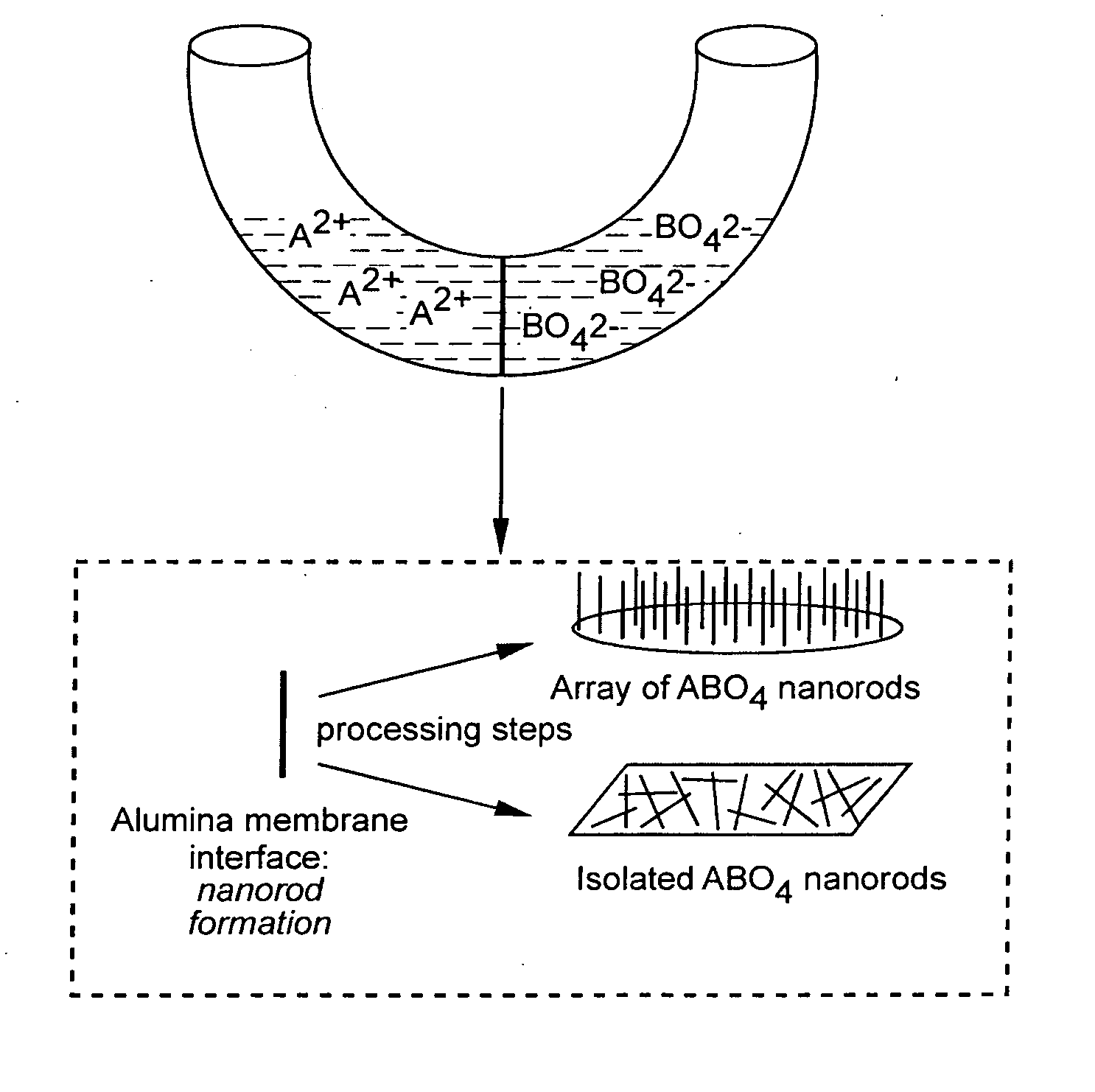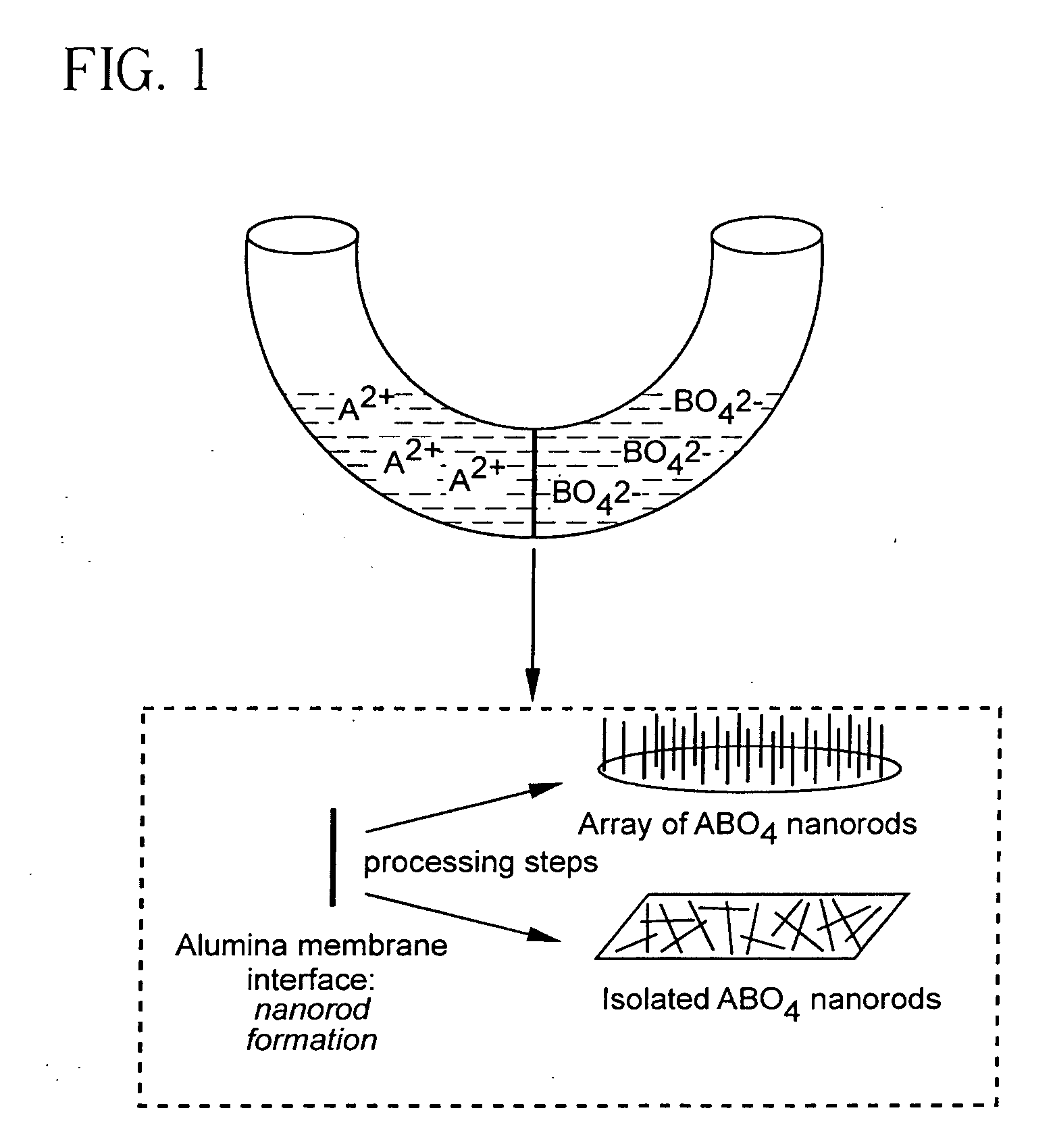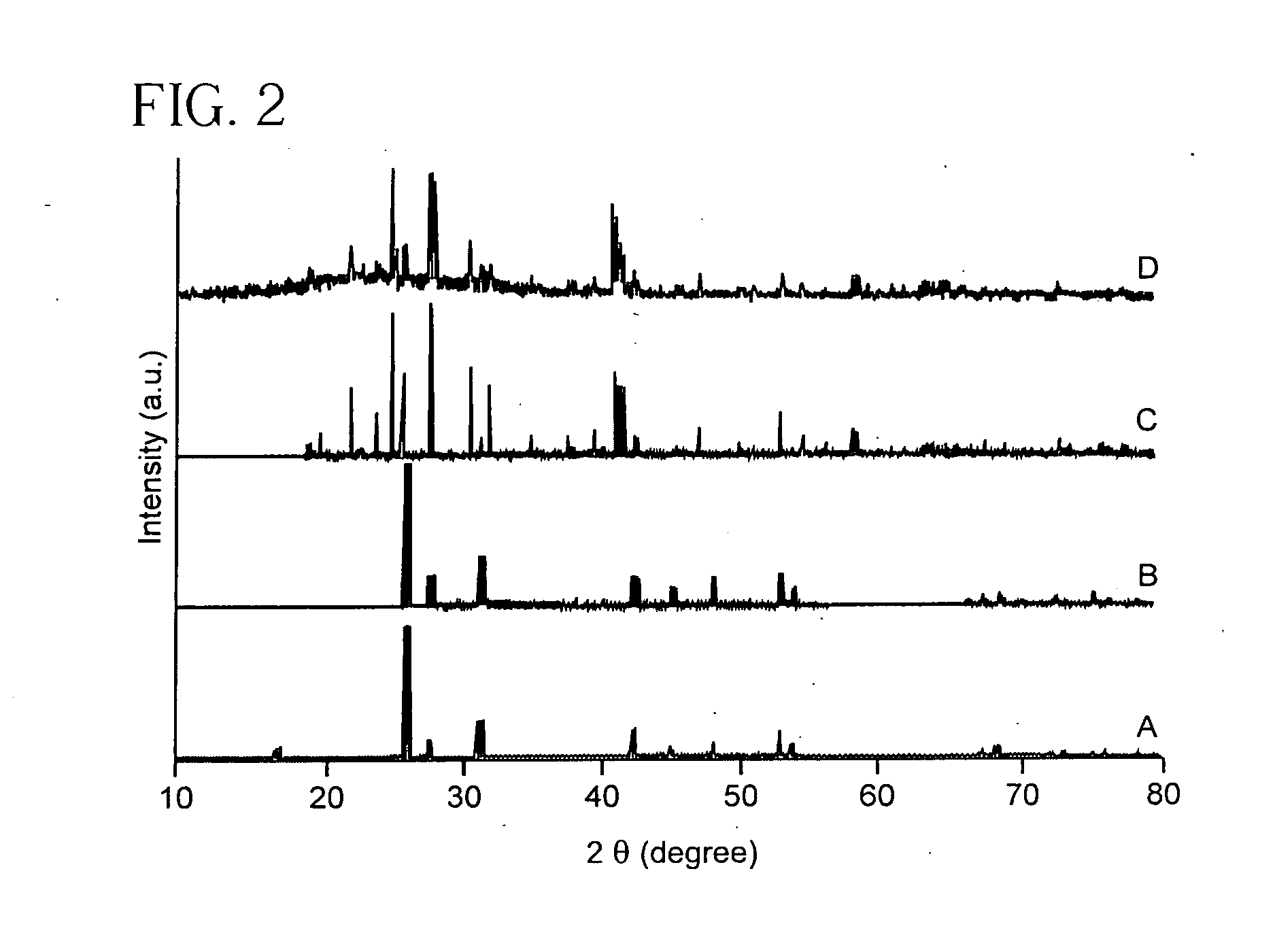Metal oxide and metal fluoride nanostructures and methods of making same
a technology of metal fluoride and nanostructure, which is applied in the direction of calcium/strontium/barium sulfate, chemically reactive gases, chemical vapor deposition coating, etc., can solve the problems of inability to synthesise single-crystalline nanostructures with predictable size and morphology, methods that do not yield pure nanostructures, and prior art methods that do not enable the synthesis of single-crystalline nanostructures
- Summary
- Abstract
- Description
- Claims
- Application Information
AI Technical Summary
Benefits of technology
Problems solved by technology
Method used
Image
Examples
example 2
[0156] Commercially available polycarbonate membranes (Whatman Co., UK) used in this study contain pore sizes of 50, 100, and 200 nm diameter, respectively, with a thickness of ˜6 μm. These polycarbonate filters contain track-etched channels. Pores were randomly distributed across the filter membranes, and pore densities were quoted as approaching 3×108 pores c−2. In order to avoid air bubble formation on their surface, the membranes were pre-hydrated by immersion and sonication in a small volume of distilled, deionized water for a few minutes. Subsequently, the membrane was placed between the two arms of a U-shaped tube (FIG. 17).
[0157] In the typical synthesis, each half cell was filled with a solution of 0.25 M NH4F and either 0.125 mM CaCl2, SrCl2, or Ba(NO3)2 solutions to generate calcium fluoride, strontium fluoride and barium fluoride nanowires, respectively. After immersion times of up to 12 hours at room temperature, the polycarbonate membrane was de...
PUM
| Property | Measurement | Unit |
|---|---|---|
| Length | aaaaa | aaaaa |
| Length | aaaaa | aaaaa |
| Fraction | aaaaa | aaaaa |
Abstract
Description
Claims
Application Information
 Login to View More
Login to View More - R&D
- Intellectual Property
- Life Sciences
- Materials
- Tech Scout
- Unparalleled Data Quality
- Higher Quality Content
- 60% Fewer Hallucinations
Browse by: Latest US Patents, China's latest patents, Technical Efficacy Thesaurus, Application Domain, Technology Topic, Popular Technical Reports.
© 2025 PatSnap. All rights reserved.Legal|Privacy policy|Modern Slavery Act Transparency Statement|Sitemap|About US| Contact US: help@patsnap.com



